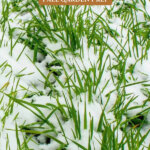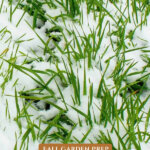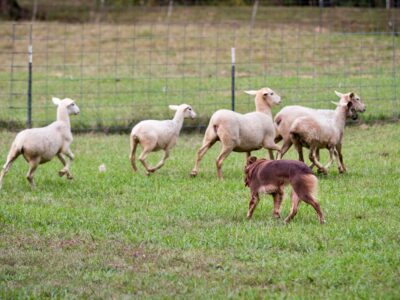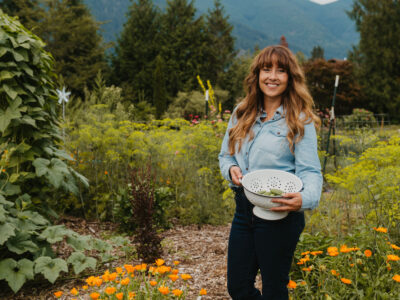The goal of gardening is that each year improves on itself. This is only possible if we take time each year to reflect and plan. By doing these garden tasks in the fall, your garden and homestead will be ready for the winter, and you'll have a head start in the spring.
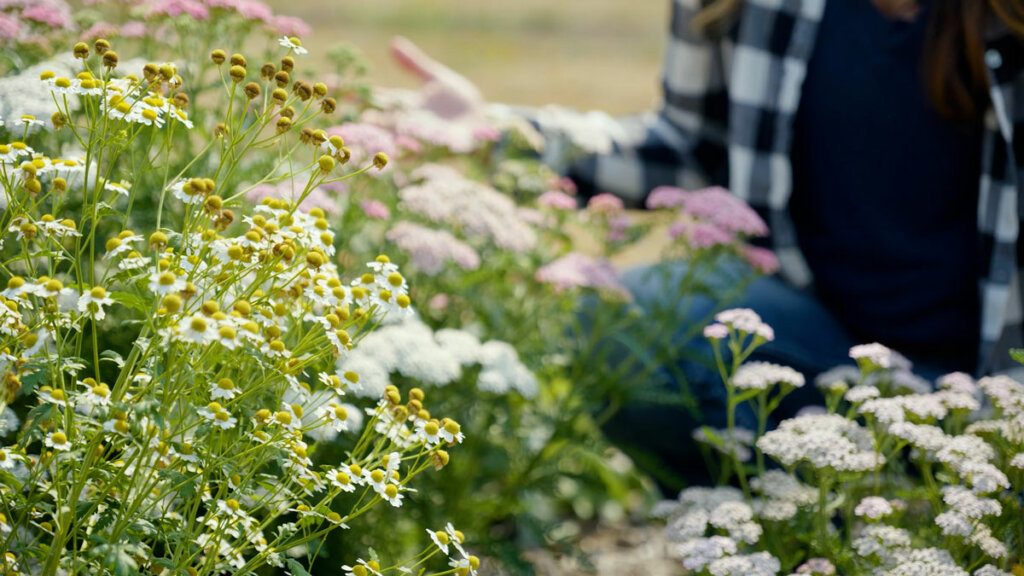
This post is a compilation of blog posts and podcasts I've done over the years. With more than 20 years of gardening, I've had plenty of time to reflect on what makes the best gardening season. In the podcasts within this blog post, you'll learn my best tips for preparing the garden in fall and winter for the best growing season the next year.
I also discuss homesteading tasks in this podcast. Visit this post for my full fall homestead checklist.
Listen in to podcast #447 above, or catch these older podcast episodes all about improving soil health and hacking your garden now for a better garden next spring. You can catch other episodes of the Pioneering Today Podcast right here or by searching on your favorite podcast app.
Listen to Episode #158, Grow More Food Next Year w/ These 5 Fall Gardening Tips:
Listen to Episode #265, Tips for a Successful Fall Garden & When to Plant for Fall Harvest:
Listen to Episode #158, Grow More Food Next Year w/ These 5 Fall Gardening Tips:
Why Fall Prep Is Important
Learning how to improve soil health is the single biggest thing any gardener can do to grow a better garden. As gardeners and homesteaders, we depend on the harvest of our garden because we all know if we have a bad harvest it can change the trajectory of whether we have enough fresh food to sustain our family through an extended period of time.
The base and backbone of your garden is your soil health. I love learning about the importance of soil health, specifically the micro and macronutrients of soil, which includes the pH levels of soil and how to adjust when needed. These are the building blocks of a healthy and flourishing garden.
But you don't need to have a biochemistry degree to be a successful gardener, and you don't even need to do soil tests if that doesn't interest you. By following these tips you will drastically improve the quality of your soil and next year's garden.
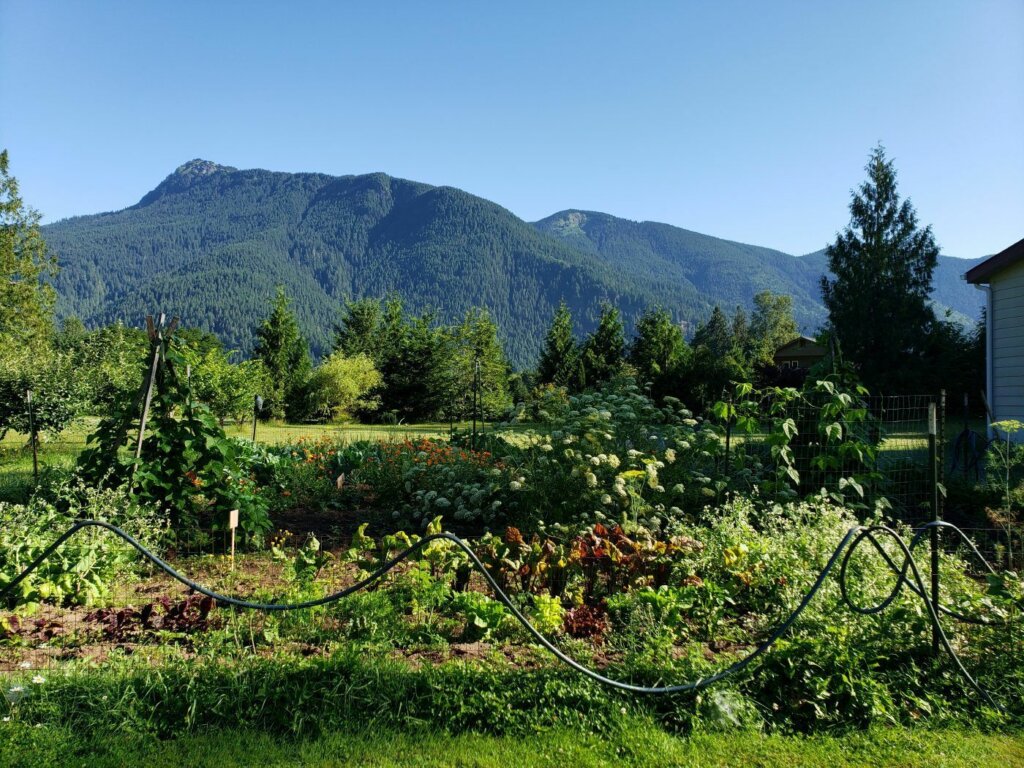
When Should You Start Preparing a Garden for Fall?
If you're planting a fall garden, you really start thinking about that in mid-summer (usually sometime in August). By the time fall rolls around, we're usually wrapping up the growing season (depending on where you live) and thinking about how to prepare our garden for next spring.
This post is not about growing a fall garden but rather about what to do in the garden once the fall garden is finished.
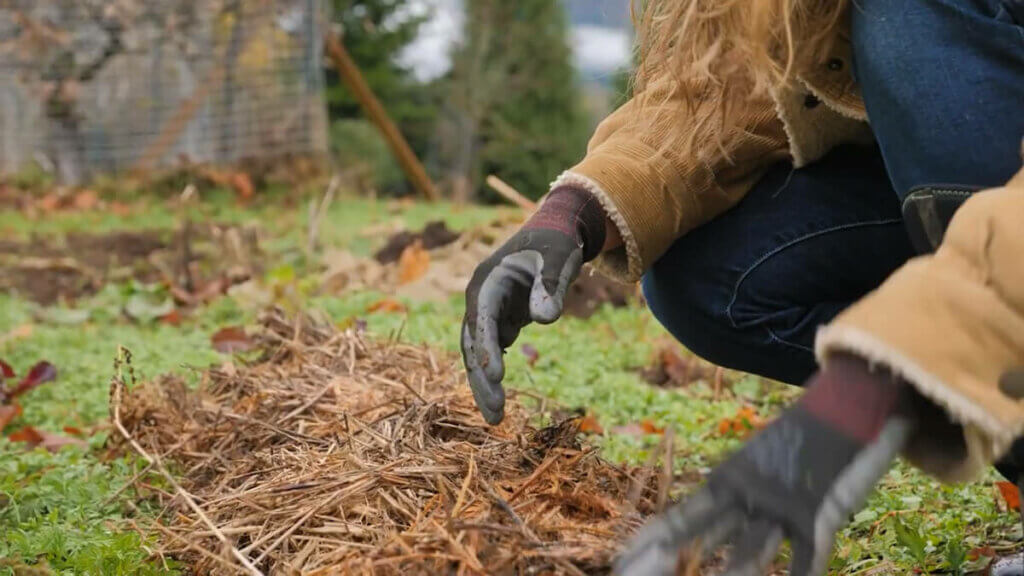
Preserving the Harvest
Right now, we have yet to have our first killing frost (more on a killing frost below), so we're still harvesting the tail end of our crops and preserving them for the year.
If you don't yet have my book, Everything Worth Preserving, I highly recommend getting it because it includes every preservation recipe I use, no matter what the crop.
For my beets, carrots and potatoes, I'll evaluate them and either harvest or store them in the ground by giving them a hefty coating of mulch. This acts like a makeshift root cellar, and I'll continue to harvest those root vegetables throughout the winter.
Fall is the best time of year to make amendments to your soil for a jumpstart on next year's garden.
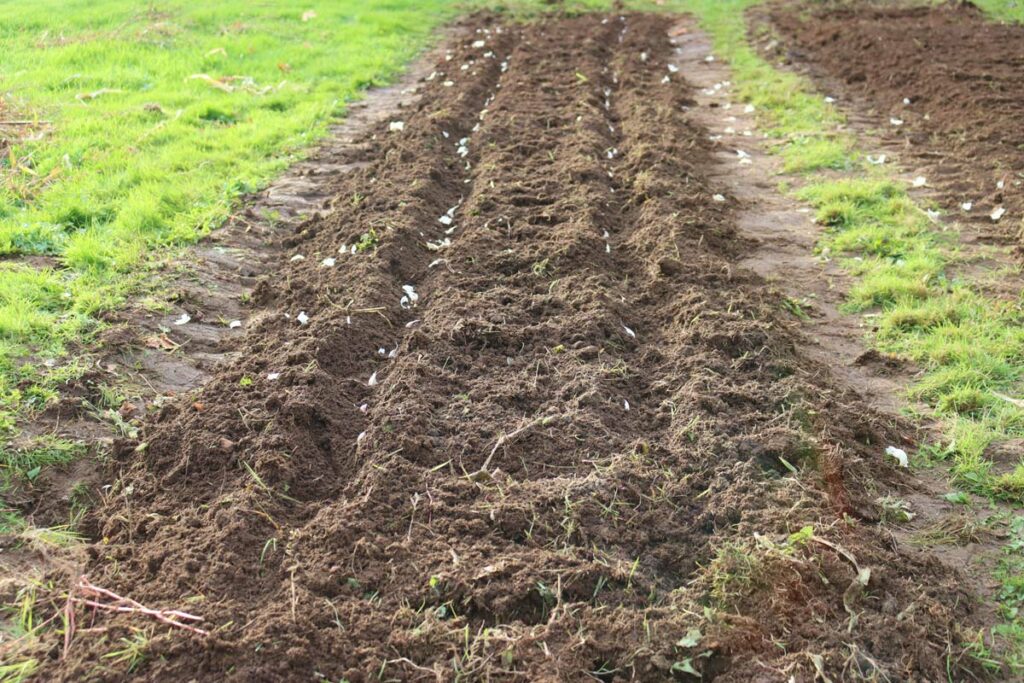
Plant Garlic
Garlic is great because you plant it in the fall and then you harvest it the next summer. If you get it in the ground in fall, it just does its thing all winter and spring, and then you get to harvest it in July.
Unless your ground is frozen solid, you can plant your garlic. Ideally, I get my garlic in the ground in October. But if your soil isn't frozen, you can plant it well into November. You just want to make sure and put a layer of straw over it to help with drainage and give it a little insulation.
Learn how to plant garlic here.
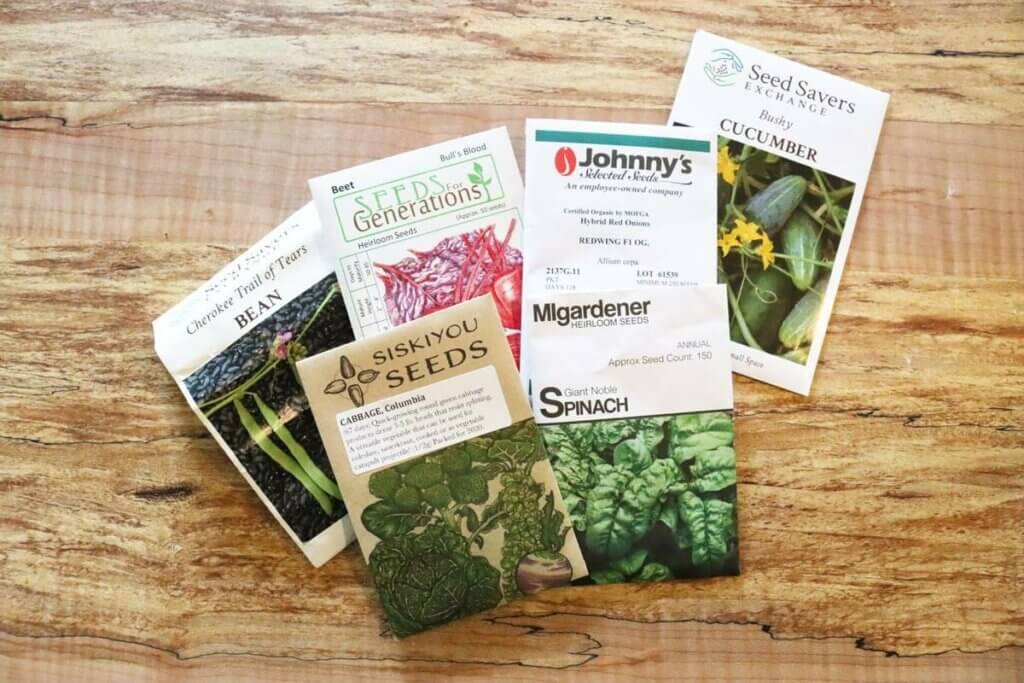
Planning Ahead
Fall is the time of year when I buy seeds for the year after next. I like to be a year ahead with my seeds, just in case there's a shortage. This means that last fall, I purchased seeds for next spring. Right now (in 2024), I'll be purchasing seeds for the 2026 garden.
I also like to place my order for onion sets or anything else that's a limited variety. I just like to be prepared ahead of time, so I don't miss out (or forget) later in the winter.
In the fall, the summer garden is still fresh in my mind, so I like to make notes about what and how much we grew to also make plans for the year ahead (more on this below).
Preparing the Garden for Fall and Winter
There are ten tips (plus a bonus tip) that I recommend doing every year to prepare your garden for fall and set yourself up for an easier spring:
- Evaluate Your Garden
- Remove Old Plants & Collect Seed
- Treat Disease & Use Pest Control
- Control Weeds
- Manage Perennials
- Control Soil Erosion
- Break Up Hard-Packed Ground
- Fertilize & Amend the Soil
- Mulch
- Plant a Cover Crop
- Store Garden Supplies
- BONUS: Record Your Frost Dates
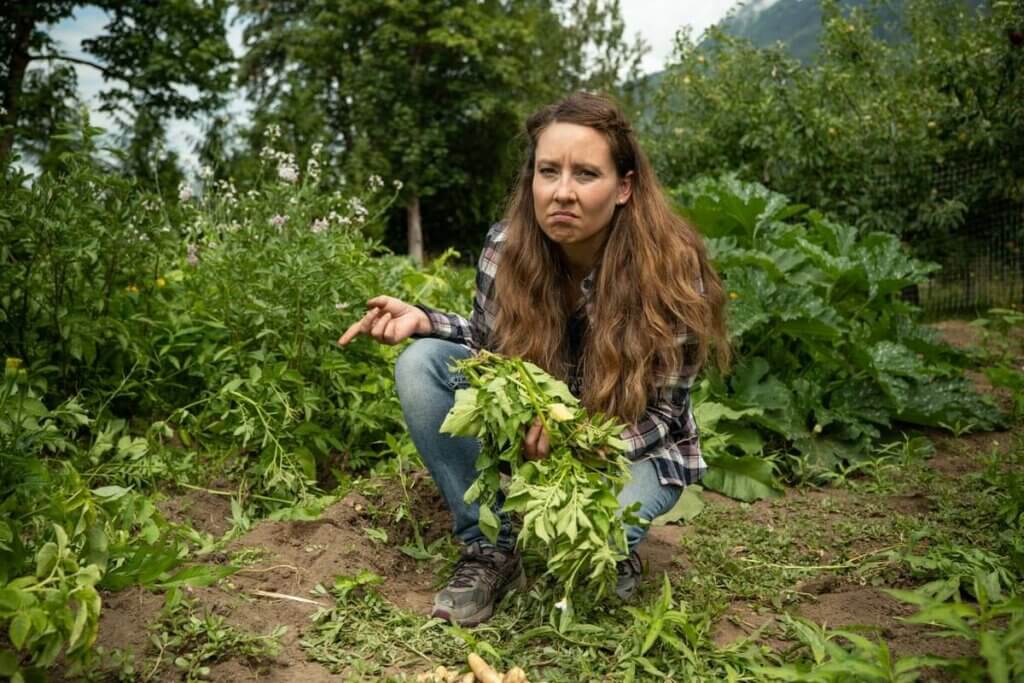
Evaluate Your Garden
Look at your annual vegetable garden, container gardens, perennials such as your fruit trees, asparagus beds, rhubarb, fruit bushes – all the things that you grow for your own fruit production.
What Went Well?
Take a look at them and make a note. If something is doing well and you're getting a really good crop, where the plants seem to be really happy and producing well without issues, you don't need to do anything with that, right? You're just going to leave that be.
If you haven't checked out my book, The Family Garden Plan, it's a great one to grab to make sure you're doing your crop rotation in the correct order. Also, my second book, The Family Garden Planner comes with your own worksheets where you can take notes year after year of your garden so those pesky papers don't get lost or tossed before next year.
What Didn't Do Well?
You really want to evaluate and assess what didn't do well. Like, did you feel totally overwhelmed with the number of weeds that you had or the upkeep of certain garden beds? If so, what are some ways that you can change and do things differently next year?
Too Many or Too Few Crops?
Or maybe you had too much of a certain crop. Now, I always feel it's a little bit better to over plant than to underplant but if you were totally overwhelmed make a note of it and don't plant as much of that specific crop next year. You can also check out this post on how to calculate how much to plant per person for a year's worth of food.
In years past, as my kids got older, I noticed that my family was eating more; my kids were growing and consuming more at each meal. However, at this point in our lives, my son has graduated and isn't eating with us as much. Therefore, I'm finding we're eating less as a family.
This is the time to decide whether to add in more fruit trees, fruit bushes, or other perennial plants. Or should something be extended, such as an asparagus patch (the bummer about asparagus is that you can't harvest them the first year to allow them to grow a really good root and crown system)? Learn how many fruit trees and berry bushes to plant per person for a year's worth of food.
I've decided that we need to put in a pear tree. We have cherries, plums, apples, blueberries, raspberries, elderberries, blackberries, and rhubarb but I don't have a pear tree. I think it might be time to add one. (Learn how to plant a fruit tree here.)
It's best to make these notes at the end of the garden season, while everything is still fresh in your mind. Trust me, you think you'll remember what went right and what didn't go well next year, but it quickly becomes a blur once the gardening season is over.

Remove Old Plants
You don't want to leave this year's plants in the garden to rot all winter. If you have plants with any signs of disease or fungus, leaving them all fall/winter will lead to the spread of disease. Plus, rotting plants will encourage mice, rats, and other rodents to find shelter in your garden.
I like to cut the plant at the soil level (leaving the roots in the ground to decompose and feed the beneficial microbes in the soil throughout the winter) and compost the rest. If your plants have any signs of disease, throw them away or burn them (do not add them to the compost pile). Alternatively, plants can be tilled back into the soil or chopped up with a hoe into small pieces to break down over the winter months.
If pests were an issue, try these 11 Tips for Organic Pest Control for Vegetable Gardens.

Collect Seeds, Dig Up Tubers & Harvest Medicinal Roots
If any of your plants have gone to seed, now is the time to harvest next year's seed supply. You can read this post on how to save seeds and this post which shows photos of how to harvest and save bean seeds.
If you're into growing a cut flower garden and need to dig up any of the tubers, now is the time to do so before the ground freezes. I did a test leaving my Dahlia tubers in the ground one year, and out of 20, only one came back.
Because I don't want to be buying new tubers every year, this is now on my fall garden checklist. The beauty of digging my tubers is I can dig up only the colors and varieties I love the most to replant the following year.
Finally, if you're growing a medicinal herb garden and need to harvest any of the roots, once you have your first frost, you can dig those plants up to harvest the roots. Read this post on harvesting medicinal herbs to learn the best way to harvest the various parts of the plant.
F
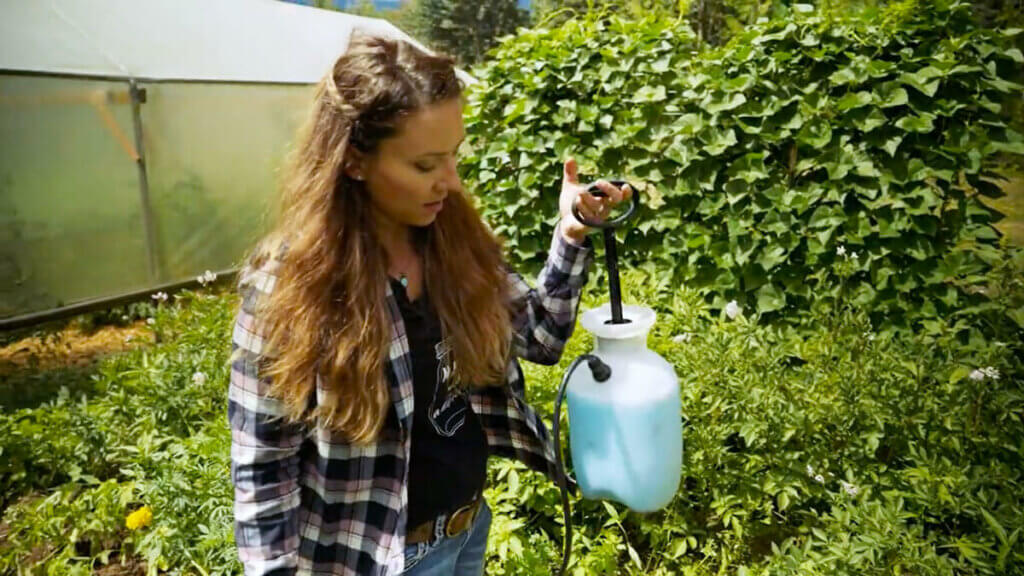
Treat Disease & Use Pest Control
If you did experience disease or had devastatingly large numbers of pests you want to pay extra close attention to those areas of your garden to prevent the disease or pests from coming back.
Be sure to remove and dispose of or burn diseased plants. Definitely don't add them to the compost pile, or just toss them aside to decompose in the garden. You don't want these diseases running rampant in your soil.
Furthermore, if your crops had pests on them, you'll want to remove any of those plants that might have eggs or larvae still on them. These insects and other pests can winter over in the soil or on the plants and come back with a vengeance next year.
If you, like me, only like to use organic and natural methods for pest and weed control in your garden, check out this post on organic pest control, this post on how to treat potato blight (and to keep it from coming back next year), and this post for organic care for your fruit trees.
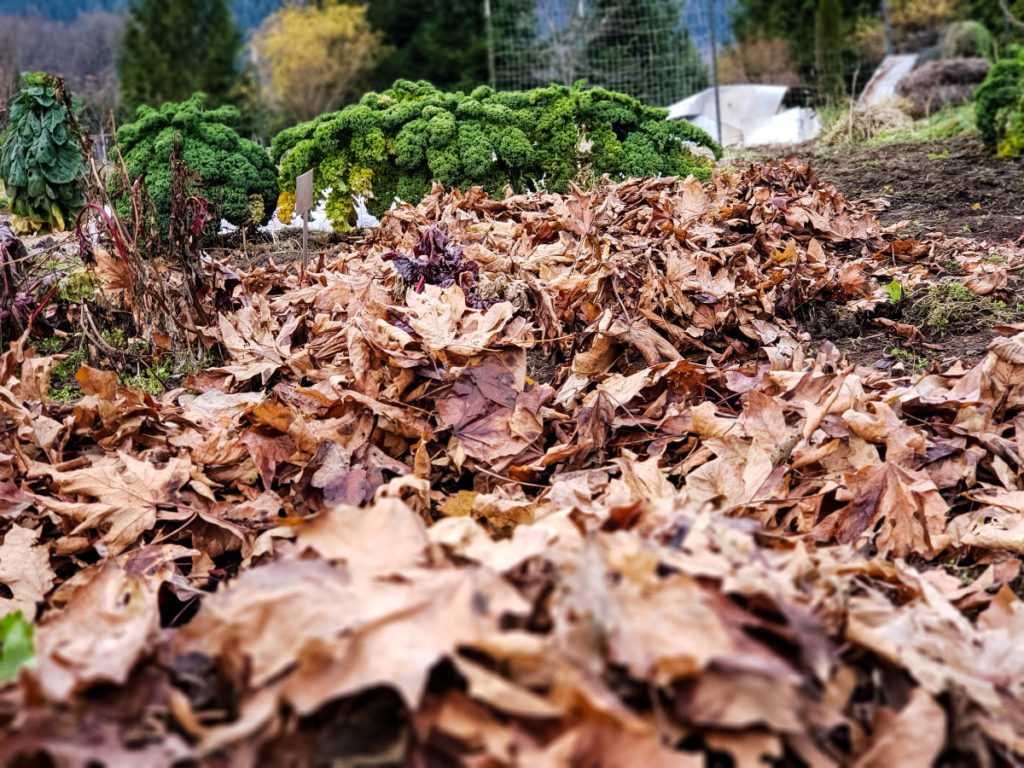
Control Weeds
Help control weeds in your garden by pulling out those that have gone to seed. Ideally, we'd like to remove all the weeds from our garden, but that isn't always possible. If you only have a small amount of time on your hands, concentrate on those weeds that have flowered and gone to seed first.
After pulling up your plants (and weeds), planting a cover crop can help control weeds by not allowing seeds to land in the soil during the winter month via the wind and birds.
This means the seed won't be able to sprout and take root in the spring after dormancy. More strategies on keeping a weed-free garden here: How to Keep Weeds Out of the Garden Naturally

Manage Perennials
The next thing I do is take a peek at my perennials – fruit trees, flowers, herbs, rhubarb, berry bushes… anything that you don't plant from seed every year but you put in the ground and it comes back the following year. I take some time to assess how my perennials did.
I have a lavender plant that that's been in a container for about four or five years and it's not really growing anymore because it's just grown to the size of the container. It's not going to get any bigger in that container, but I'd like it to, so next spring I'll be sure to move that lavender to a better spot in my garden.
If you're growing plants in containers, the plant is only going to grow as big as the container will allow it and support the root growth.
Dividing plants is another option. Would you like to expand where your perennials are growing? Diving your own plants is a great way to essentially get free plants!
Usually, after a perennial is established, chives and rhubarb are great examples, reach the size I desire for the space, you may need to divide them next year. Make note of that once they're in dormancy and also decide where you're going to put the divided part.
Will you give it to somebody? Do you want to increase the yields of that plant? If so, where else on my property will you plant it? You can transplant these now, or wait until the ground thaws in the spring.
The beautiful thing about perennials, like fruit trees, is that once established it's not often that they need much attention. It's still good to check them because sometimes they do, just learn to read the signs of your plants.
One sign to look for is whether it had a lot of growth or not. Did it seem like it was kind of struggling to grow or were the leaves a paler color, especially yellowing, or did you get a smaller fruit production?
Those are all signs that the plants are low on nitrogen so putting compost and/or some type of manure on in the fall to allow for sufficient time to break down over the winter months will help feed the soil for the upcoming spring.
Look at your perennials to determine if you need to do these types of applications.
You can also move herbs to a warmer area of your yard to winter over. Most years my rosemary would die each winter because it just couldn't survive our cold temps. But one year I decided to transplant it to the southern-facing side of my house, right up next to the wall. Ever since that plant has flourished and come back year after year.
Read more on how to prune herbs for better growth next year.

Control Soil Erosion
If you notice that areas of your garden continue to erode away you'll want to stop this as soon as possible or you'll be at risk of having very poor and compacted soil.
Planting a cover crop can actually protect your soil from being eroded by wind, rain, and snow which can all wash away the topsoil. The topsoil is where most of the nutrients and organic matter lay to feed your plants so you can see why it's important to maintain it.
If you missed the window on planting a cover crop this year you can also use sheet mulching to control erosion and add nutrients back into the soil. Keep reading below for more information on mulch.
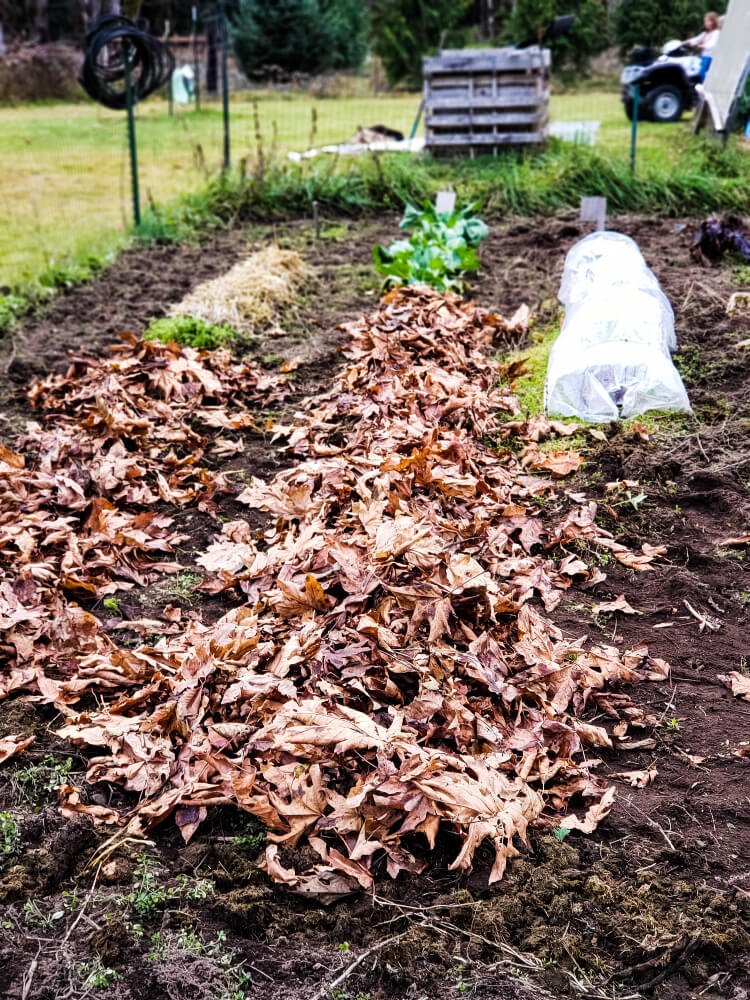
Break Up Hard-Packed Ground
Hard-packed ground that is devoid of organic matter isn't ideal for growing crops. The roots of your plants need oxygen, but if the soil is too compact, your plants can literally suffocate.
Adding a cover crop actually breaks up hard-packed or compact soil (and adds in organic matter at the same time). The roots of the cover crop will help oxygen get down into the soil and allow for easier growth of spring plants.
If your soil isn't very hard-packed, or you missed your window for planting a cover crop, you can also use a Broadfork to loosen up the ground to allow you to add in some mulch or compost and work it into the soil.
Keep reading for more information on cover crops.
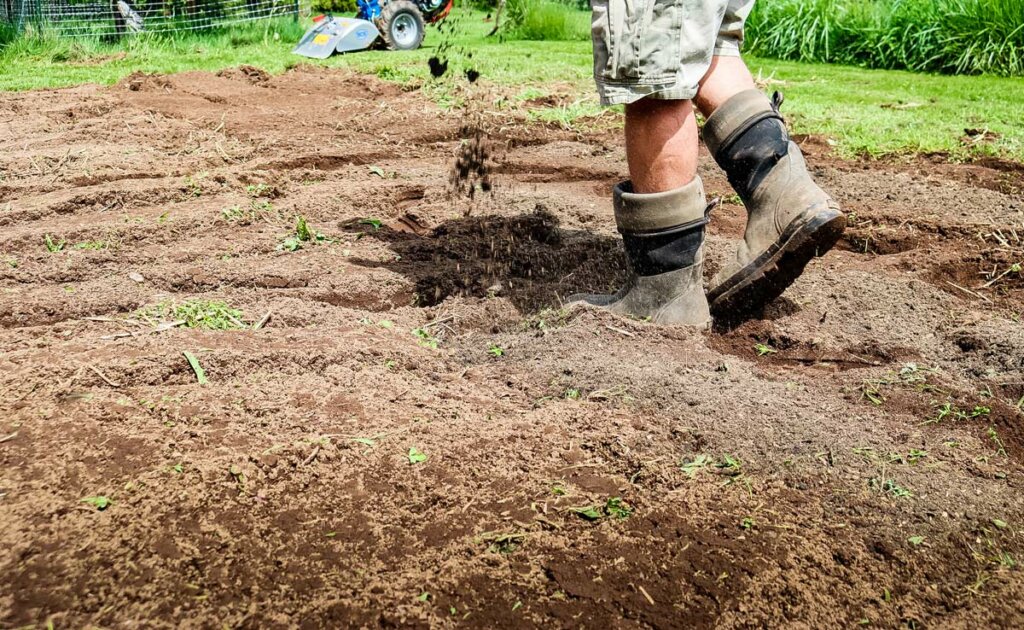
Fertilize & Amend the Soil
Many crops, including brassicas like cabbage, broccoli, cauliflower, and Brussels sprouts, are heavy nitrogen feeders. This means they use up a lot of the nitrogen available in the soil to grow, depleting the soil.
Cover crops and legumes or beans, help introduce nitrogen back into the soil. Keep reading for some of the best cover crops to use.
You may be asking, “What should I add to my garden soil in the fall besides nitrogen?”
There is a lot we can add beyond just a cover crop. You can add minerals, fertilizers, and compost. Phosphorus and potassium take time before they're available for plants, so these are best added in the fall for next year's crops.
My recommendation is to hold off on the other minerals and fertilizers until next spring. They directly help increase the growth of your plants, so it's best to wait until your plants are in the ground.
Compost is a fantastic way to give your garden a boost in the fall, especially if there's some hot compost that needs to cool off. The winter months are the perfect opportunity for this.
Another option, before sowing your cover crop or if you aren't using a cover crop, is to put down a layer of manure. You can use chicken, cow, horse, llama, or pig manure. It will break down over winter and provide natural fertilization for your garden.
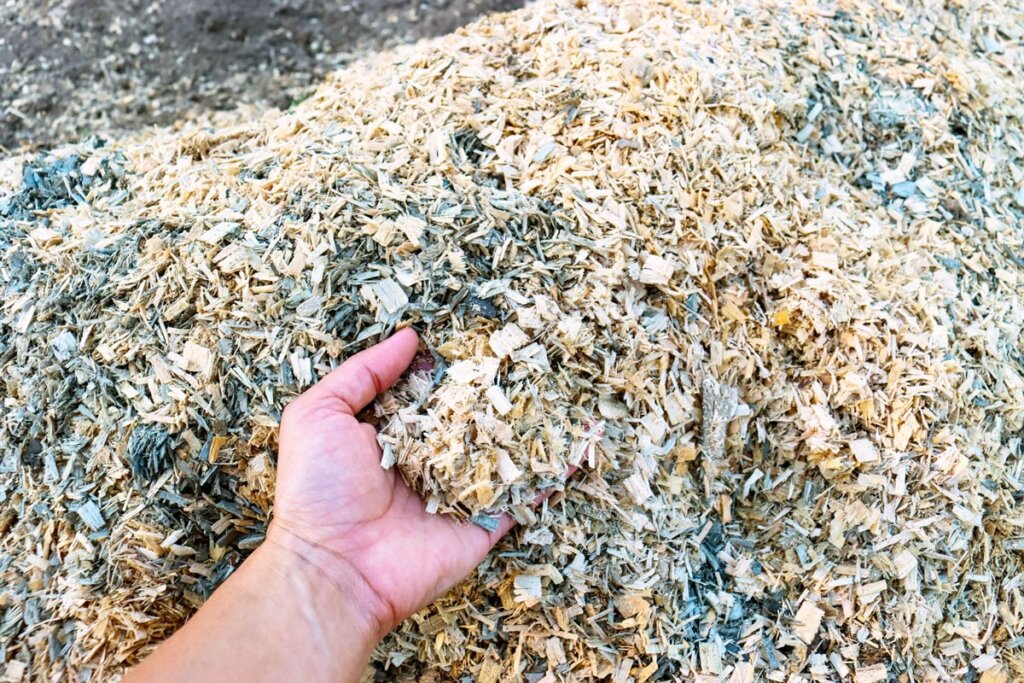
Mulch
Want to know how to enrich poor soil? Add organic matter! We did an experiment two years ago where we covered half the garden in wood chips to see how our garden would fare. You can read more about our wood chip update 18 months later in this post, but needless to say, we've kept up with the woodchip mulch!
When you add, till, or hoe organic matter into your soil (whether it's woodchips, mulch such as leaves or straw, or a cover crop), it will break down and add organic matter back into the soil after serving its purpose.
Sheet mulching has also been one of my favorite ways to mulch my garden over the years. The best way to do it is with deep layers—as deep as you can get them!
The key is to make thick layers of mulch that will break down to create really good organic matter and soil. It will work into that base layer of soil and, over the years, create good soil long-term.
If you start sheet mulching now in an area that was otherwise unable to grow crops and keep up, two years from now, you'll have significantly improved soil and be able to start growing.
If you don't want to sheet mulch, you can just add a lot of compost, but it will cost you a whole lot more unless you're able to make enough of your own (both homemade compost or purchased compost that's good quality and organic source will do).
Read more here on sheet mulching, the easy way to build soil & compost in layers.
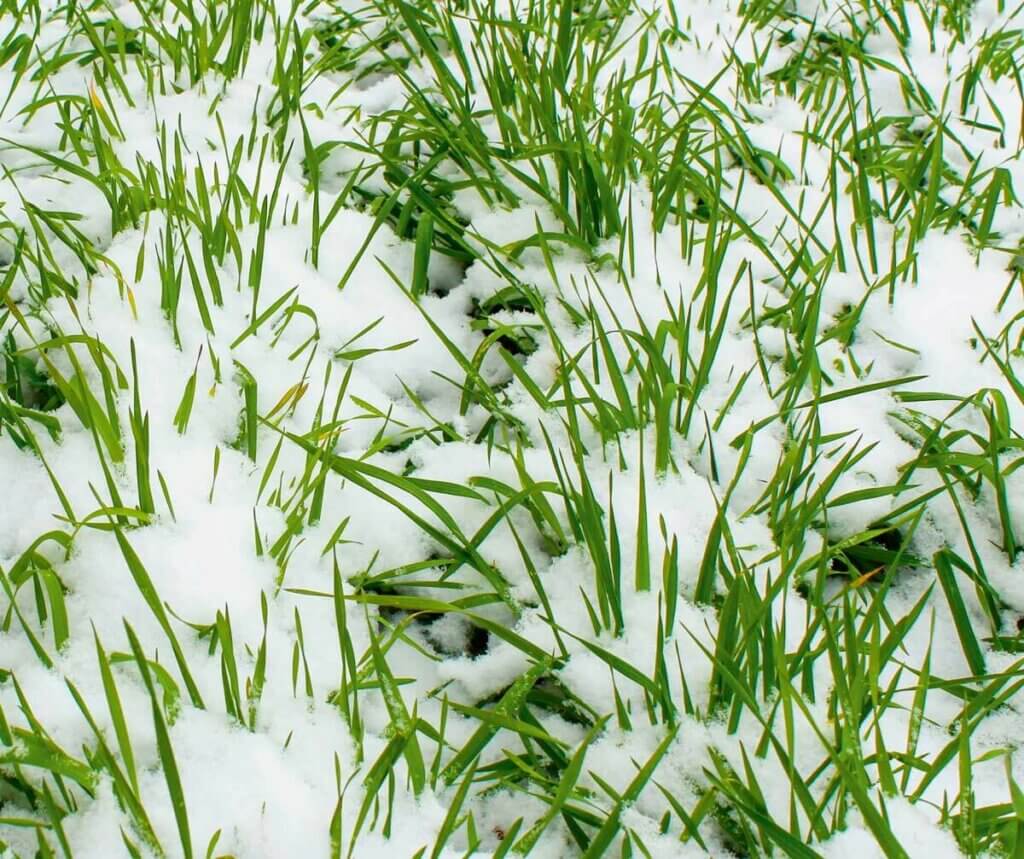
Plant a Cover Crop
Cover crops are an excellent way to improve your soil. They require little work but do a lot of work for your soil. By planting a cover crop, you'll also benefit from the tips below, such as controlling erosion, breaking up the hard-packed ground, adding nutrients and organic matter to the soil, and even preventing weeds.
Learn more about cover crops and the best options for science-based companion planting for a healthier garden here.
Sow cover crops 4 to 6 weeks before your first hard frost date. Scatter the seed by hand or with a seed spreader over the soil, ensuring the soil is damp and seeds are kept moist until they sprout. Let them grow all winter. You may notice the cover crops don't grow as fast after the first hard frost and pick back up again once it starts to warm up in the early spring or late winter.
Best Cover Crops
- Annual ryegrass (this has a long root for breaking up hard soil and also germinates rather fast)
- Buckwheat
- Clover
- Oats
- Hairy vetch (Hairy vetch is actually part of the legume family and has a pretty purple flower)
In the spring, mow down your cover crop and allow it to dry out for a few days before tilling or hoeing it back into the dirt.
You can also use an edible cover crop. We used kale for part of our cover crop last year. It got to be about 4 inches high before the first hard frost. After that, it didn't grow, but come spring, it started growing again, making it one of the first edibles for harvest. A total win-win!
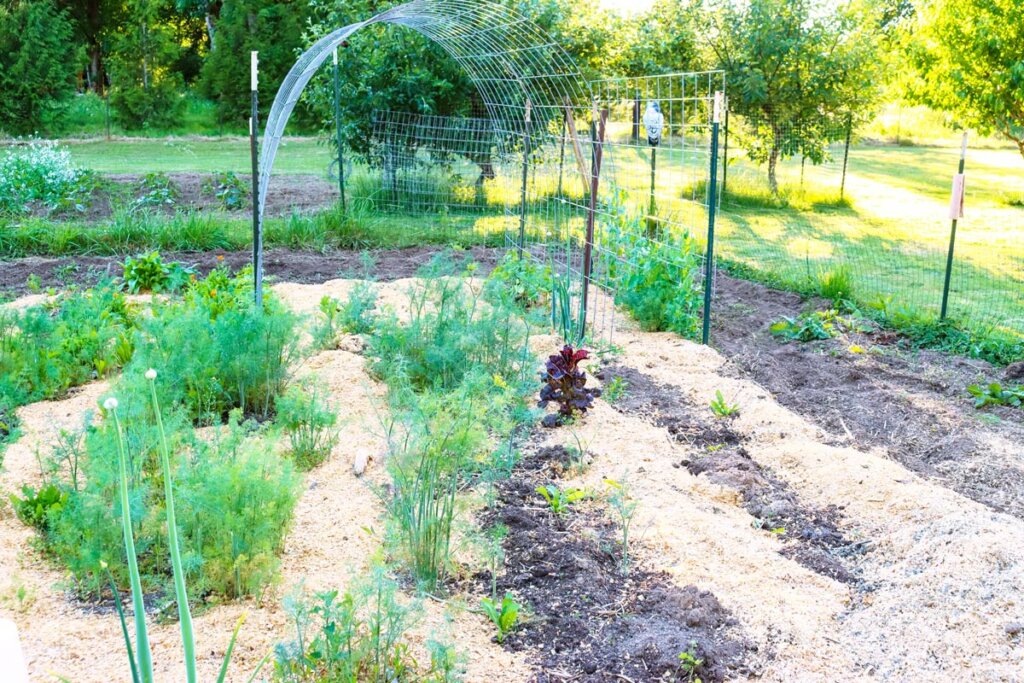
Store Garden Supplies
If you used any kind of garden structures or supplies, such as soaker hoses, rain barrels, tomato cages, row covers, stakes, etc., fall is a great time to remove them from the garden and store them away for the winter.
At the end of the growing season, when you're tired and worn out, it's easy to leave these things in the garden until next year. But all you're doing is shortening the life of these garden supplies. Do yourself a favor and take an hour or two this weekend to get everything wrapped up, emptied out, dusted off, and put away.
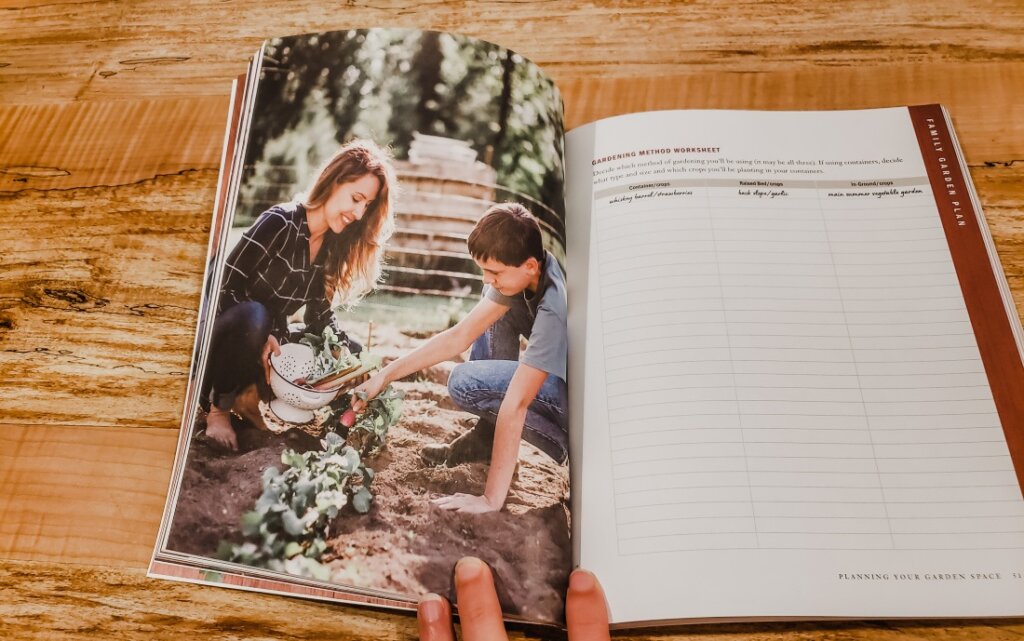
(BONUS) Record Your Frost Dates
Depending on your climate and growing zone, you are likely approaching your first hard frost (if you're listening to this early to mid-September) in the fall. A hard frost is classified as a killing frost, meaning it will wipe out your warm-weather crops, like your cucumbers, summer squash, green beans, and tomato and pepper plants.
A hard frost is usually below 30 degrees Fahrenheit. You can get a frost around 32 degrees, but it doesn't always kill everything. What we're most concerned with is the hard frost that just wipes everything out in one night.
It's important that you track this for your area specifically so that you know when your average first fall frost really falls. Each zone has multiple micro-climates, so it's good to know where your backyard garden falls on the zone chart.
I always recommend people do the same thing in the spring. Mark your last frost to have accurate records for your specific yard and growing area. There is nothing like having data from your own place.
We can get a lot of great average data from online resources such as your county extension or Googling the information, but there's nothing like the exact information for your garden.
Resources
You can find the links mentioned in the podcast below:
- Everything Worth Preserving
- Apple Pie Filling
- Apple Butter Recipe
- 12 Ways to Preserve Apples (including the applesauce recipe)
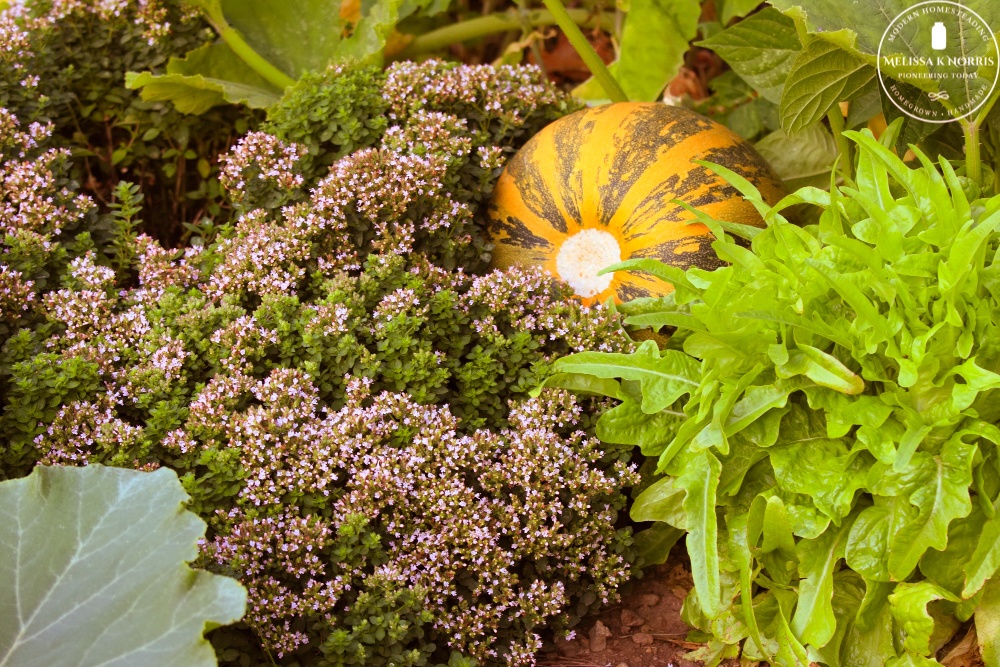
More Gardening Articles
- Wood Chips for Garden Mulch (Beneficial or Not?)
- Beginner Gardening Secrets You Need to Know
- 13 Basic Steps to Starting a Vegetable Garden
- How to Create a Garden Plan for More Harvest & Less Stress
- What to Plant in August (For a Fall Garden)
- Hugelkultur Garden Beds (What, Why & How)
- Hot Climate Gardening Tips
- Cold-Weather Gardening Tips (Grow Food All Year Long)






